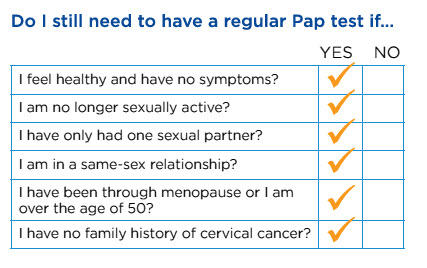Talking about Pap tests: Q&A with Dr. Claudette Chase
by Sara Chow
 “Cervical cancer screening saves lives,” says Dr. Claudette Chase, Regional Primary Care Lead with Cancer Care Ontario and Prevention and Screening Services at Thunder Bay Regional Health Sciences Centre (TBRHSC). A Pap test detects precancerous cells of the cervix or uterus early, which allows for proper treatment and follow-up to prevent progression to cancer. Throughout the month of April, health clinics across the Northwest Region are hosting cervical cancer screening clinics to help women complete this important test. Call the Cervical Hotline at (807) 684-7787.
“Cervical cancer screening saves lives,” says Dr. Claudette Chase, Regional Primary Care Lead with Cancer Care Ontario and Prevention and Screening Services at Thunder Bay Regional Health Sciences Centre (TBRHSC). A Pap test detects precancerous cells of the cervix or uterus early, which allows for proper treatment and follow-up to prevent progression to cancer. Throughout the month of April, health clinics across the Northwest Region are hosting cervical cancer screening clinics to help women complete this important test. Call the Cervical Hotline at (807) 684-7787.“Cervical cancer screening saves lives,” says Dr. Claudette Chase, Regional Primary Care Lead with Cancer Care Ontario and Prevention and Screening Services at Thunder Bay Regional Health Sciences Centre (TBRHSC). Dr. Chase understands women saying ‘ I don’t like getting this done’ when it comes to having a Pap test, which screens for cervical cancer, but reminds us that it’s a normal and healthy test to complete. In this Q&A she hopes to provide information that will encourage women to complete their cervical cancer screening.
What is a Pap test? What does it look for?
A Pap test detects precancerous cells of the cervix or uterus early, which allows for proper treatment and follow-up to prevent progression to cancer. In order to perform the test, you must be undressed from the waist down. Your health care provider will check your external genitalia to make sure there are aren’t any sores or signs of infection. They will then slide an instrument, called a speculum, into your vagina to view your cervix and use a small brush to take samples of your cervical cells for analysis at a lab. This is usually painless, but there may be mild discomfort.
Some of us just find this test this test embarrassing to have done, but this test can be especially hard for women who have survived sexual abuse. Let your health care provider know this, and then you can be in control of the exam.
Current screening guidelines recommend that sexually active, healthy women should start having a Pap test done at age 21, and continue to be screened every 3 years. Women can be assured that a Pap test is a good screening test for cancer.
Does a Pap test look for other sexually transmitted infections (STIs)?
Your health care provider will usually screen for sexually transmissible diseases at the same time as getting your Pap test. You should ask what tests are being ordered and make it clear if you have any particular worries. The Pap test itself does not test for STIs, but additional swabs we usually do check for gonorrhoea, chlamydia and trichamonas (STIs).
Human papillomavirus (HPV) is a common sexually transmitted infection, which is the main cause of cervical cancer. A Pap test does not look for HPV infection, rather, it is taking cells from your cervix to see if there are abnormal changes to them caused by the HPV infection.
Why are Pap tests every 3 years? Is that safe?
The recommendation for screening average-risk women every 3 years was based on evidence showing that a 3 year screening interval is safe and effective. Cancer Care Ontario now recommends that women, who have ever been sexually active, get screened every 3 years, starting at age 21 and continuing until they are 69 years of age.
If I like having a Pap test annually, can I still do that?
You should discuss the risks and benefits with your health care provider. Some women who are immunocompromised or who have had an abnormal Pap test result will get checked more frequently.
April is Cancer Care Ontario’s new Cervical Cancer Awareness Month. Throughout the month of April, health clinics across the Northwest Region are hosting cervical cancer screening clinics to help women complete this important test. Call the Cervical Hotline at (807) 684-7787. For more information about cervical cancer screening, visit: https://www.cancercare.on.ca/pcs/screening/cervscreening/.